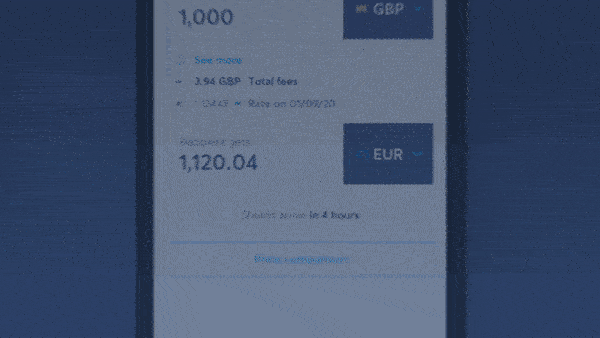Wise ACH vs wire guide
Everything you need to know about using Wise for USD transfers and paying via ACH vs wire

If you have an old 401(k), employment retirement plan, or you’re trying to understand how to plan for your retirement, you may have heard of Rollover IRAs.
But what are they and how do they factor in for your taxes and retirement planning? Read on to learn more about Rollover IRAs and what they can mean for your future savings. Also, check out the helpful section on Rollover IRAs distributions for both Traditional and Roth IRAs.
| 📝 Table of contents |
|---|
It is important to note that advice for retirement planning or your own taxes should be taken with consultation of a tax planner or retirement planning professional. They will be able to assess your current situation, future cash flow needs, and risk tolerance in order to recommend the best outcome for you and your family.
A Rollover IRA is when you move an old employer retirement plan into an IRA. This can be because you are moving into retirement or you have changed employers.
But let’s start from the top. An IRA is an individual retirement account that the IRS allows to grow with tax benefits that are fully realized in retirement.
With a Traditional IRA, you are able to contribute to the account with pre-tax dollars, and then pay taxes on the income you take when you are in retirement. Roth IRAs, instead, use post-tax dollars which then grow and you can take as income tax-free in retirement.
| ℹ️ A Rollover IRA is used to protect the tax-deferred status of your employer sponsored retirement plan assets. |
|---|
Since most employer sponsored retirement plans have pre-tax dollars, the money will be moved into a Traditional IRA, and not a Roth IRA account.
Employer sponsored retirement accounts include
By ‘rolling over’ the old employer sponsored retirement plan to an IRA, you are able to continue growing the assets in a tax-deferred status until you need to take your Required Minimum Distributions.
| 🎯 Quick Take: Rollover IRA |
|---|
|
When you leave a company or an employer, you may wonder what to do with the 401(k) or retirement plan you held with them. This is where a Rollover IRA can kick in.
You can rollover your tax-deferred plan into a Traditional IRA with a bank, investment firm, mutual fund company or broker of your choice. The funds will then stay tax-deferred and you can choose how you want the money invested.
But there are two ways to go about the transfer. You can either do a direct rollover or an indirect rollover.
A direct rollover is when the plan administrator transfers the assets from your employer sponsored plan to the IRA directly. They can either make a digital transfer or cut a check directly to where your Rollover IRA is. Through a direct rollover, you are not responsible for moving the money and you are able to avoid any tax penalties.
An indirect rollover is when you as the former employee take responsibility for the funds and then deposit them into the new Rollover IRA.
The problem that can arise with an indirect rollover is that you are required to get the funds and then deposit them in the new Rollover IRA account within 60 days. If you fail to do so, you are likely to be hit with a penalty and the assets could be categorized as income.
In that case it would create a taxable event. With an indirect rollover, there is also a chance that the IRS will hold on to 20% of the assets and can only be recovered when you file your annual tax return.
ℹ️A Rollover is different from a transfer of assets because a Rollover is moving from one type of plan to another, such as a 401(k) to an IRA. ℹ️ A transfer of assets is between two of the same types of accounts, such as an IRA to an IRA |
|---|
In most cases, a Rollover IRA is when you move an employer plan to an IRA, while a Traditional IRA can be opened brand new and funded. The employer plan is often a 401(k) that is no longer being added to because you have left the employer.
Rather than having it sit at the previous plan administrator, you can roll the pre-tax money in a 401(k) into a Traditional IRA. You can continue to make contributions to a Rollover IRA.
| ℹ️ With a Rollover IRA, you can move your old retirement plan or 401(k) as a lump sum into an IRA, no matter how large or small your account is. |
|---|
You can also roll the funds into a Roth IRA, but more on that in this section.
A Traditional IRA is different from a Rollover IRA because the funds are not required to be moved from a previous employer plan. Instead you can open a Traditional IRA brand new and continue to fund it with the pre-tax dollars from your current employer. You can even open it by only meeting the maximum contribution rules per the IRS every year.
The maximum you can contribute to a Traditional IRA is $6,000 annually if you are below the age of 50, or $7,000 annually if you are over 50 years old. But this can change per year, so make sure you keep an eye on what the new annual rules are.
Whether you go for a Rollover IRA or Traditional IRA, in both cases you will be taxed on the money when you take it out as income. With non-Roth IRAs, that can mean paying taxes when you first start taking RMDs from the account. A Rollover IRA will essentially work like a Traditional IRA once the funds are rolled over.
A Rollover IRA can give you more options for your money over your previous employer-sponsored retirement plan. You can invest in CDs, mutual funds, stocks, bonds, ETFs and more, depending on your profile and the firm you choose.
You will need to have the Rollover IRA account open before starting the transfer from your old employer plan.
You can check with your current bank if they open Rollover IRAs to help streamline the process. Popular firms like Fidelity and Charles Schwab can help you with the Rollover IRA process and opening an account.
Of course, check to see the fees with opening an account, some firms may have maintenance fees while others may charge a fee for activity. Also check with your employer-plan administrator to know the options available for your plan. Some plans require a full withdrawal of the total amount while others may allow for only a partial withdrawal if you choose.
| ℹ️A Rollover IRA doesn’t have to be the only option, see if you can roll your old 401 (k) into a new one if it is available. |
|---|
Need to send money overseas or back home to the States? Check out Wise. Wise lets you send money directly to local bank accounts in the US, and over 150+ other countries. 🌏

All the real exchange rate and just one low fee, you can use the Android or iOS app to join the 8 million people around the world that send money online with Wise.
Open your free Wise account now 🚀
If you have an old 401 (k) or qualified employer plan but want the tax-free status of Roth IRA withdrawals, you can consider rolling into a Roth IRA instead of a Traditional IRA.
The benefit is that you can take tax free withdrawals in retirement, which can be especially helpful if you expect taxes to increase in the future.
However, if you go forward with this type of a rollover, you will have to pay taxes on the amount in the 401 (k). Roth IRAs can only be funded by post-tax dollars.
That being said, you won’t be subject to any tax penalties in addition to the taxable event. It is best to speak to an advisor or tax professional if this is the best choice for you.
You can contribute more funds to a Rollover IRA as long as the money is earned income from employment or work and you are within the IRS designated limits for annual contributions.
The maximum amounts you can contribute can change every year, and they currently stand at:
When you are 50 years old, you get an additional $1,000 allowance to contribute as a ‘catch up’.
It is best to double check with your Rollover IRA account to make sure that your specific plan allows for additional contributions.
By moving into a Rollover IRA, you are subject to the regulations regarding distribution for that specific type of account.
For a Traditional IRA, you are required to take the RMDs at 70½, or 72 based on the SECURE Act if you qualify. There is a penalty if you fail to take the adequate RMDs from a Traditional IRA.
Roth IRAs on the other hand don’t require RMDs. You can keep the funds in the account as long as you like. Once you are above 59½, there are no taxes or penalties. If you are younger than 59 ½ or have had the account for less than 5 years, you may be subject to a penalty.
Something to keep in mind is that with a 401(k) you could have the option to withdraw funds penalty free from the account at age 55 if you leave your job. This is an additional benefit that a Traditional IRA Rollover can not provide.
Sources
All sources checked as of 15 December, 2020
*Please see terms of use and product availability for your region or visit Wise fees and pricing for the most up to date pricing and fee information.
This publication is provided for general information purposes and does not constitute legal, tax or other professional advice from Wise Payments Limited or its subsidiaries and its affiliates, and it is not intended as a substitute for obtaining advice from a financial advisor or any other professional.
We make no representations, warranties or guarantees, whether expressed or implied, that the content in the publication is accurate, complete or up to date.

Everything you need to know about using Wise for USD transfers and paying via ACH vs wire

Learn all about how the Wise card compares to no FTF ones.

Can you use a Wise Account to convert money you earn?

See how the Wise card compares with Chase Sapphire in our complete guide

Discover in detail whether your account information is visible to the recipient when you make a payment through Wise.

Not sure if Instarem or Wise is the best option for you in the US? Check our guide and find out.